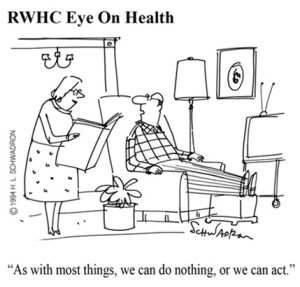
Rural Wisconsin Health Cooperative
Pharmacies without pharmacists. Nursing homes without nurses. Hospitals without staff.
In 2034, the U.S. Census Bureau projects that older adults will edge out children in population size: People aged 65 and over are expected to number 77.0 million while children under age 18 will number 76.5 million.
“Between 2000 and 2019, the United States saw a 32.2% increase in high school graduates, rising from 2.85M to 3.77M. The national trend of increasing high school graduates is estimated to continue for only one more year, with 3.93M graduates projected for 2025. However, an 11-year downward trend from 2026 to 2037 is likely, with only 3.52M high school graduates predicted in 2037. That would represent a -10.4% decrease from 2026 to 2037.” (Source: Western Interstate Commission for Higher Education’s Knocking at the College Door report.)
At the same time, the Wisconsin Council on Medical Education and Workforce is forecasting, due to the major increase in healthcare needed by an aging population, staff shortages of 20% by 2035, pretty much across all health care. The Wisconsin Department of Workforce Development is forecasting a similar shortage of 19,000 Registered Nurses by 2040.
All of us in American health care are justly proud of the work we do. As needed positions will increasingly go unfilled and stress on the remaining workers increases, it is natural that each of us would focus on increasing the number of people choosing our own discipline.
However, it is critically important that we also recognize the shared challenge we face–that we must partner across all healthcare sectors to increase the number of people choosing a career in health care, particularly in our underserved communities.
My AI assistant (ChatGPT) supports my understanding that there are multiple approaches not specific to any one profession or line of work that have the potential to increase the number of people choosing a career in healthcare:
1. Early Exposure and Education: “Integrate healthcare-related subjects into school curricula. Offer health science classes, workshops, and career exploration days. Collaborate with local healthcare providers to offer internships, shadowing opportunities, or field trips to healthcare facilities.”
2. Scholarships and Financial Incentives: “Create scholarships specifically for students from rural areas pursuing healthcare careers. Develop loan repayment programs for healthcare professionals who commit to working in rural areas.”
3. Mentorship and Role Models: “Connect students with healthcare professionals from their own communities who can serve as mentors and role models.”
4. Community Engagement: “Host community events that highlight healthcare careers and provide information on educational pathways. Involve students in local health initiatives or public health campaigns to increase their exposure and interest in healthcare.”
5. Career Pathways and Training: “Provide access to online courses and resources to help students learn more about healthcare careers and requirements.”
6. Workforce Development: “Establish pipeline programs that support students from rural areas through the education and training phases.”
7. Promoting the Benefits of Rural Practice: “Highlight the benefits of living and working in a rural community, such as close-knit communities and a lower cost of living. Emphasize the positive impact healthcare professionals can have in rural communities and the fulfillment that comes from serving underserved populations.”

By combining the above approaches, we can create a more appealing and supportive pathway to expand the number of students choosing a career in health care. Federally sponsored Area Health Education Centers are great partners to facilitate this work.
There are “so many options” available in health care where young people can find work that they will find meaningful. We need to create a bigger pie rather than each of us fighting for a piece of a shrinking pie.
For HealthCare Positions via WHA, CLICK HERE.
For Healthcare Openings at Tomah Health, CLICK HERE